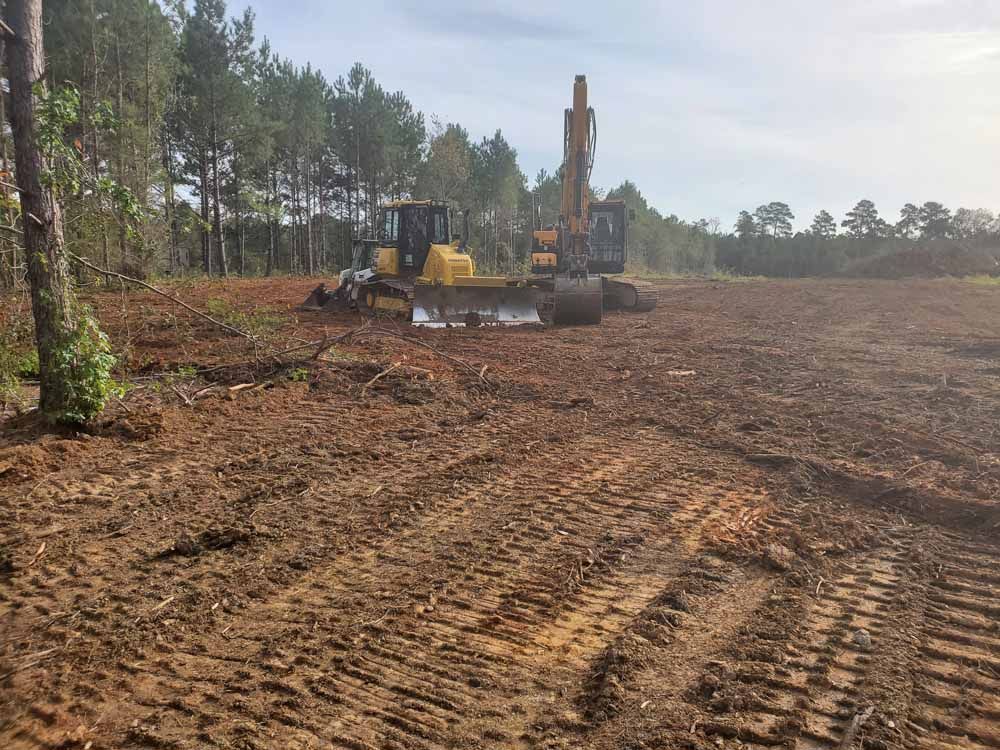Land Grading Service Wendell, NC
Looking for Top Land Grading Contractor?
Land grading service involves the process of leveling the surface of the land to a smooth and uniform plane, facilitating better drainage and foundation for construction. At
A1 Grading Inc, we utilize advanced techniques and machinery to achieve precise grades and prepare your site optimally for any project. This service is vital for preventing future issues such as water pooling and ensuring the longevity and safety of your built structures.

Precision Site Preparation
-
1. Site Analysis and Survey
Initial step involves conducting a detailed site survey to understand the topography, soil condition, and other critical factors that would influence the grading process.
-
2. Demarcation and Planning
Based on the survey results, the site is marked clearly delineating the areas that require grading, and a detailed plan outlining the scope of work is created.
-
3. Clearing the Land
Before grading can commence, the site needs to be cleared of debris, vegetation, and any existing structures that might hinder the grading process.
-
4. Grading and Leveling
Utilizing heavy machinery, the land is graded and leveled according to the plan, ensuring proper slope and elevation levels to facilitate optimal drainage and a solid foundation for construction.
-
5. Site Inspection and Approval
After the grading process is complete, a final site inspection is conducted to ensure that the grading meets the specified requirements and is ready for the subsequent construction phase. Adjustments are made if necessary before getting the official approval to proceed with the next steps of the project.
Integrated Excavation and
Grading Services
Land Leveling Techniques
Land leveling is a process of modifying the existing topography of a site to a smoother surface or specific gradient.
Advanced Erosion Control Measures
We offer erosion control services that help in preventing soil erosion which can be caused by wind or water.
Customized Drainage solutions
At A1 Grading Inc, we design and implement effective drainage solutions to direct water away from your construction or landscaping site.
Effective Soil Compaction Methods
Soil compaction involves the process of increasing the density of soil by pressing the soil particles closer together, which helps to remove air pockets and prevent future settling issues.
Comprehensive Lot Clearing Solutions
Our lot clearing services facilitate the removal of trees, shrubs, and other obstacles from a plot of land, making it suitable for construction or landscaping projects.
Frequently Asked Questions
-
What is grading of the land?
Grading of the land refers to the process of leveling the ground to prepare it for construction or landscaping projects. It involves altering the slope and elevation of the land to ensure proper drainage and to create a stable base for the building. This process is crucial in avoiding future issues such as water pooling and foundation instability.
-
How do you grade a piece of land?
Grading a piece of land begins with a thorough site evaluation to understand the existing topography and soil conditions. Post evaluation, the process involves removing unnecessary materials like rocks and debris, followed by the utilization of heavy machinery to cut and fill the land to achieve the desired level and slope. Finally, the area is smoothed out, often using a grading attachment to ensure a uniform surface.
-
Is grading the same as excavation?
No, grading and excavation are not the same; they are two phases in the site preparation process. Excavation refers to the removal of soil and rock to form pits, trenches, or open faces, essentially making space for foundations, utilities, or other structures. Grading, on the other hand, follows excavation and involves leveling the excavated site to a planned grade, ensuring proper slope for drainage and a stable base for construction.
-
How do you flatten land?
Flattening land involves several steps, including the removal of vegetation, debris, and other obstructions from the site. Once cleared, heavy machinery such as bulldozers or graders are used to cut and fill areas, moving soil from higher areas to lower ones to achieve a level surface. The final step is to smooth the surface meticulously, ensuring it is uniformly flat and ready for any subsequent construction or landscaping.
-
What are the different types of grading?
There are several types of grading, including rough grading, which involves the initial process of leveling the land with significant soil and material movement. Fine grading comes after rough grading, where the land is smoothed to the final grade specification. Other types include site grading, which focuses on preparing a site for construction, and landscape grading, which is aimed at achieving a desired aesthetic or functionality for landscaping projects. Each type has its distinct focus and is chosen based on the requirements of the project at hand.
Contact Us
Contact Us
We will get back to you as soon as possible
Please try again later
Contact Information
Phone:
(919) 422-0223
Email:
Address:
1201 Martin Pond Rd, Wendell, NC 27591, United States of America


